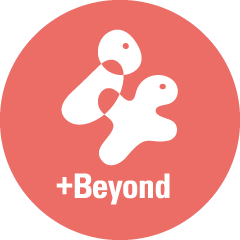Inochi Declaration
Build spaces where everyone can attune their ears to the voices of Inochi resonating through art across generations, deepening their understanding of Inochi.
We live in an era where the question, “What is Inochi?” holds profound significance. Whether we consider the advancements in technology and medicine or ponder the nature of human existence in the face of artificial intelligence, we continually confront the question of Inochi. In many fields, people are grappling to find answers to this question.
One way to understand the invisible, formless concept of Inochi is by attuning our ears at a museum. Museums preserve and exhibit works that encapsulate the voices and emotions of Inochi in tangible form. For the purpose of this discussion, let us focus specifically on art museums. What does it mean to attune our ears at an art museum? It means investigating and researching the artworks exhibited there. These works, transformed into color, form, sound, and language, are manifestations of the voices and emotions of Inochi. Through careful study and research, we can bring the essence of Inochi to light.
From ancient cave paintings created tens of thousands of years ago to artworks being produced at this very moment, Inochi has given rise to a multitude of artistic expressions. While the creators of the ancient cave paintings are no longer alive, and we cannot directly hear their voices, we do not need to give up. Those paintings are living witnesses to their era. If we investigate and understand these works properly, they will eloquently tell us the stories of their time. Thus, to truly listen to the voices of these works, we must engage in accurate and thorough research. This is what we mean by “attuning our ears.”
However, investigating and researching the artwork alone is not sufficient to fully hear the voices of Inochi. This is because Inochi never exists in isolation; it is inevitably influenced—however subtly—by the surrounding environment, whether natural, social, or institutional. We must therefore approach the voices of Inochi with an awareness of these environmental factors.
For example, at the Ohara Museum of Art, artists are offered opportunities for residency and creation in a studio once used by painters a century ago. These artists not only create in the studio but also explore the local area, interact with residents, and research the land’s history and culture.
The artworks produced there could not have come into being without the specific time, place, and artist. In the future, if someone seeks to understand this era, this place, or this artist, the works created now will surely speak to them about this moment with clarity and depth. To ensure that future generations can truly hear these voices when they attune their ears, the Ohara Museum of Art preserve records and the artworks themselves.

Listen intently to the voice of the work through dialogue
In this era where the question “What is Inochi?” carries such weight, the Inochi Forum, in collaboration with museums and other arts and cultural institutions, will work to create spaces where many people can visit museums, engage with both artworks and their surrounding contexts, and attune their ears to the voices of Inochi.
[References]
・The Courtauld Institute of Art:
https://courtauld.ac.uk/about-us/
・The Art Institute of Chicago:
https://www.artic.edu/about-us
・Ohara Art Foundation, Ohara Institute for Art Research:
https://ohara-art-foundation.jp/service_category/service_category1/
[Action Platform]
Art, Culture and Sports
[SDGs]


